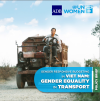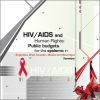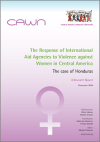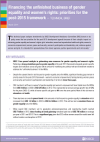Transport is one of the most important aspects of national infrastructure and a key to gender equality. Women’s opportunities to access paid work are reduced when there is poor investment in gender
FOUND 10
This study of HIV/AIDS, human rights and budgets in five Latin American countries (Argentina, Chile, Ecuador, Mexico and Nicaragua) was prepared by Fundar Centro de An¡lisis e Investigaci, October 2004.
This synthesis paper examines the evolution of efforts to address domestic violence in Latin America. In the outset, the authors elucidate the methodological dilemmas involved in collecting data on domestic violence. The paper discusses some of the outcom
This report focuses on the responses of international aid agencies working on violence against women (VAW) in Central America and, in particular, the situation in Honduras.
This report presents research on the costs of implementing South Africa's Domestic Violence Act (DVA), with a focus on quantifying missing personnel costs. It describes the methodology used in the research, the process required to obtain a protection order and the time taken at each step.
This note provides an overview of existing gender equality markers and reviews issues relating to the tracking and monitoring of investments related to gender equality and women’s empowerment.
This technical paper analyses investments by OECD Development Assistance Committee (DAC) donors in six policy areas that are priorities for the post-2015 development agenda because of their catalytic impact on achieving gender equality and women’s rights: girls’ education; sexual and reproductive he
The guidance note sets out commom principles and standards for gender equality markers systems that track and report on allocations and expenditures for gender equality and women's empowerment.
This report draws on the ten indicators including global indicator on gender equality of the Global Partnership monitoring framework. This report provides a first global snapshot of the state of play in implementing selected Busan commitments. In the midp
The third report in a new research series on resources for women's rights organizing from the Association for Women's Rights in Development, this publication presents the results of our mapping of new donors making major commitments to work with "women and girls", to better understand this trend and







